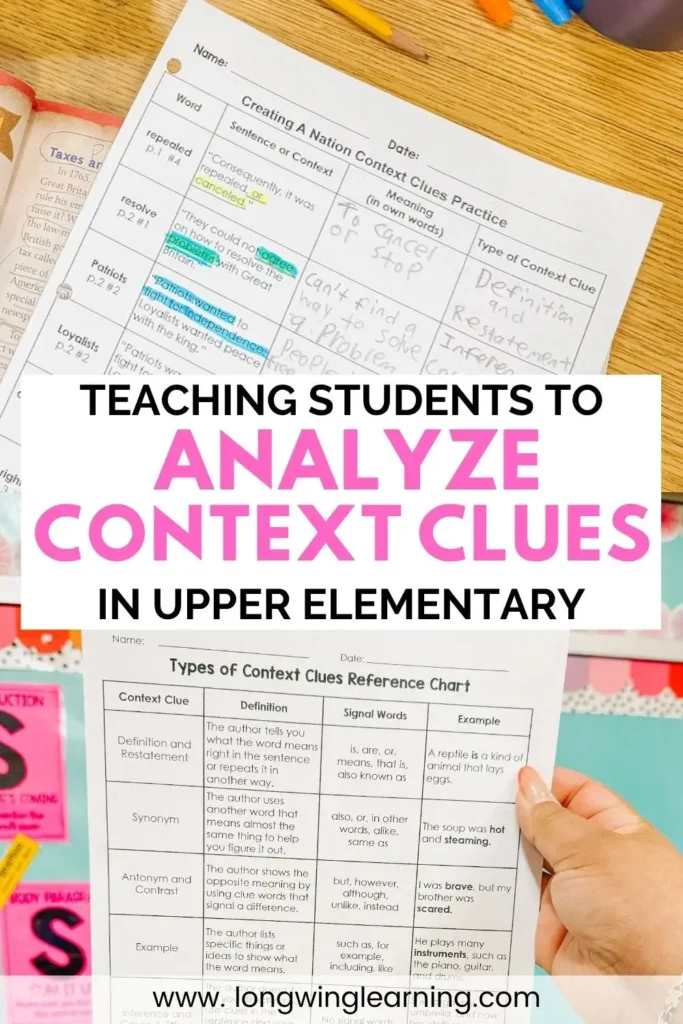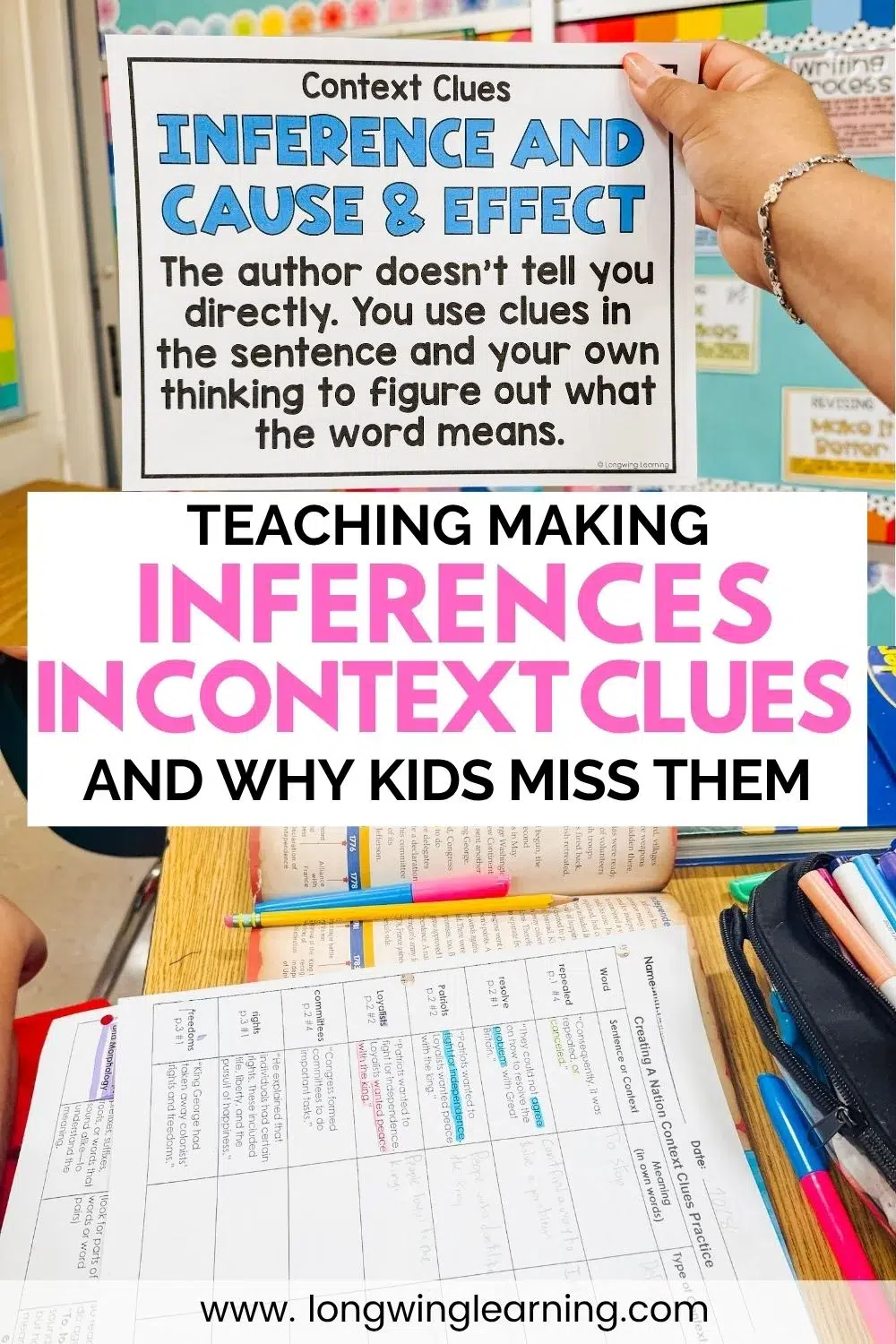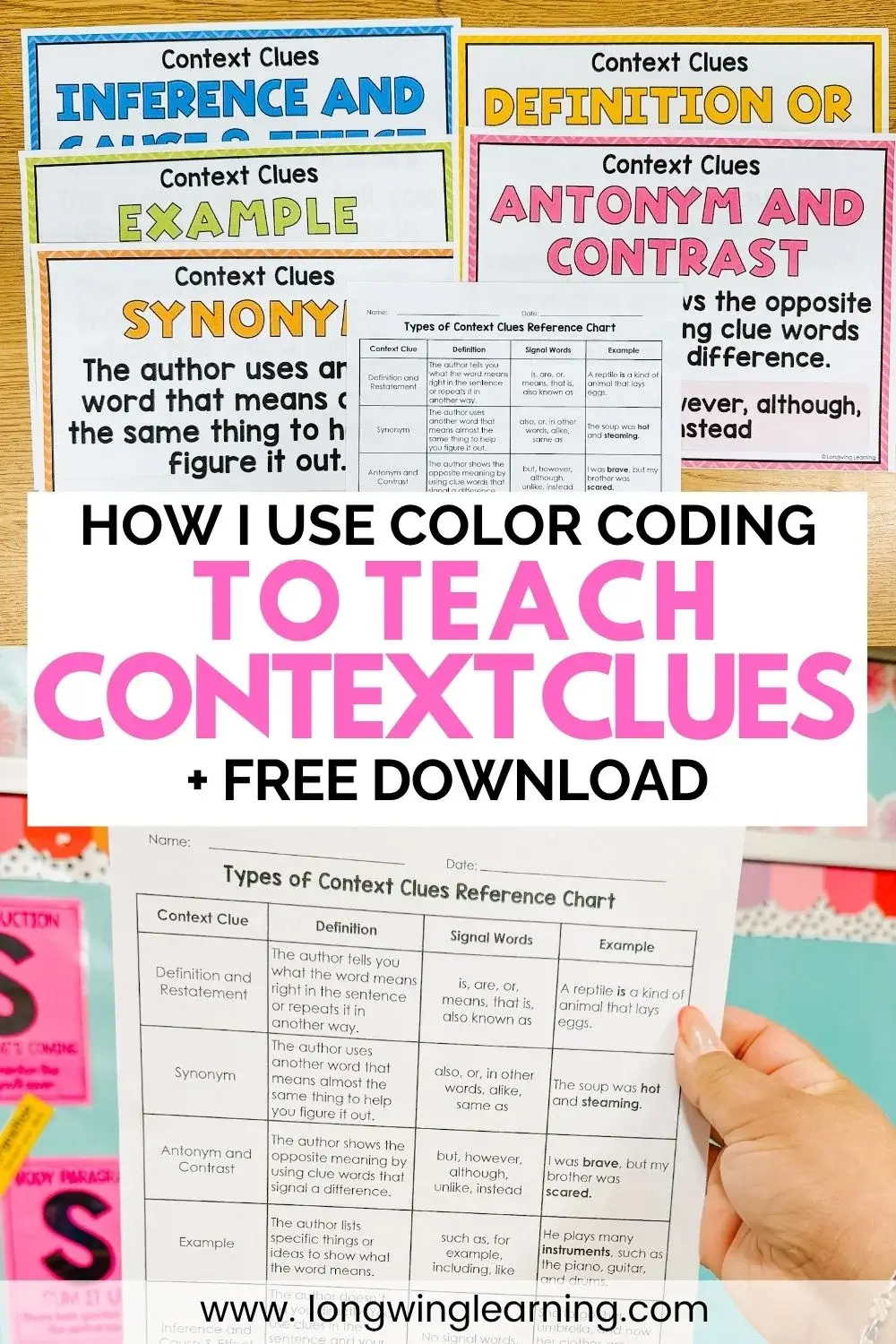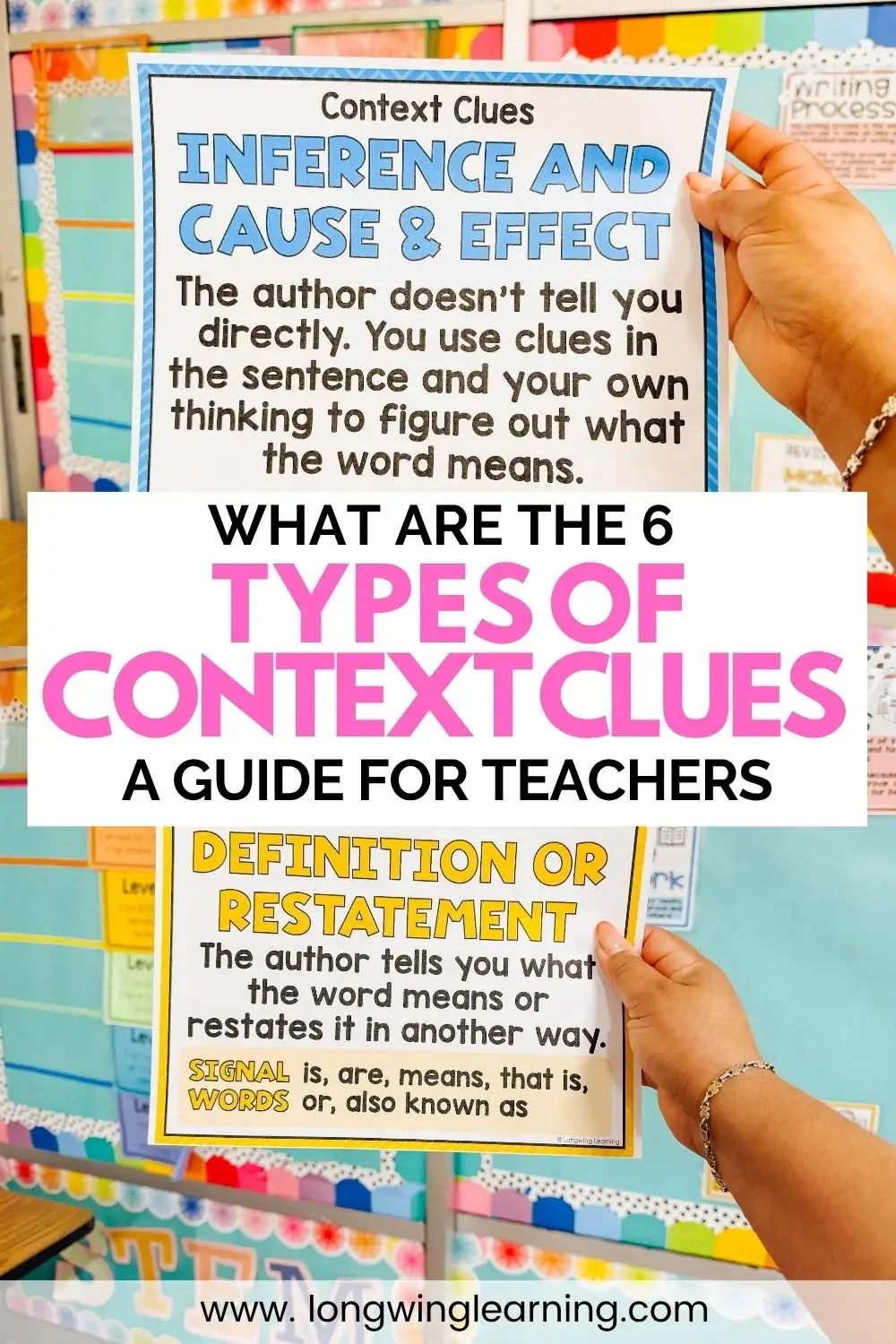Once students can identify a context clue, the next step is to analyze context clues teaching them to explain how and why the clue helps them understand.
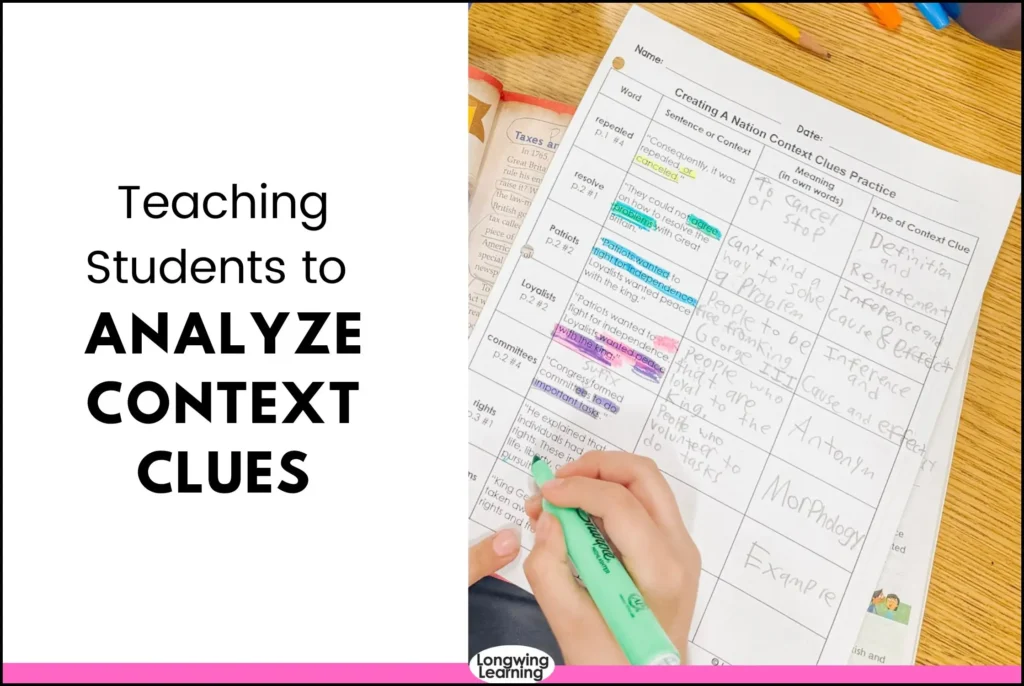
Raise your hand if you’ve ever watched a student confidently circle a “context clue”… but still not understand the word.
Been there. Taught that.
But here’s the truth: just identifying a clue isn’t enough.
In upper elementary, especially by 4th and 5th grade, students are expected to go beyond basic vocabulary and start analyzing how language builds meaning.
So let’s talk about how I help students go from simply spotting context clues to actually analyzing them—and why this shift matters so much for comprehension and academic confidence.
Teaching Students to Analyze Context Clues
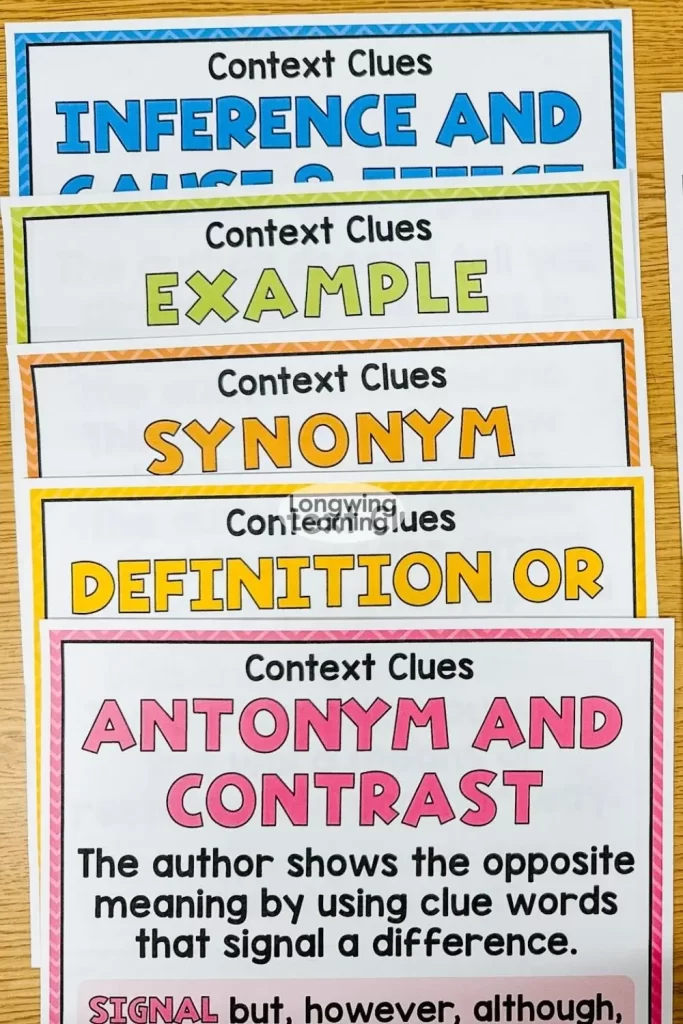
Most teachers (myself included) start by teaching students to identify different types of context clues:
- Synonym or restatement
- Antonym or contrast
- Definition
- Example
- Word relationships
- Morphology (roots, prefixes, suffixes)
This is essential.
But it’s only step one.
The next step is helping students:
- Explain how the clue supports their definition
- Analyze the author’s word choice
- Connect word meaning to tone, mood, or purpose
- Cite the evidence that helped them understand
That’s what deeper comprehension requires.
How I Scaffold Context Clue Analysis in My Classroom
Here’s how I help my students move from surface-level ID to deep-level analysis.
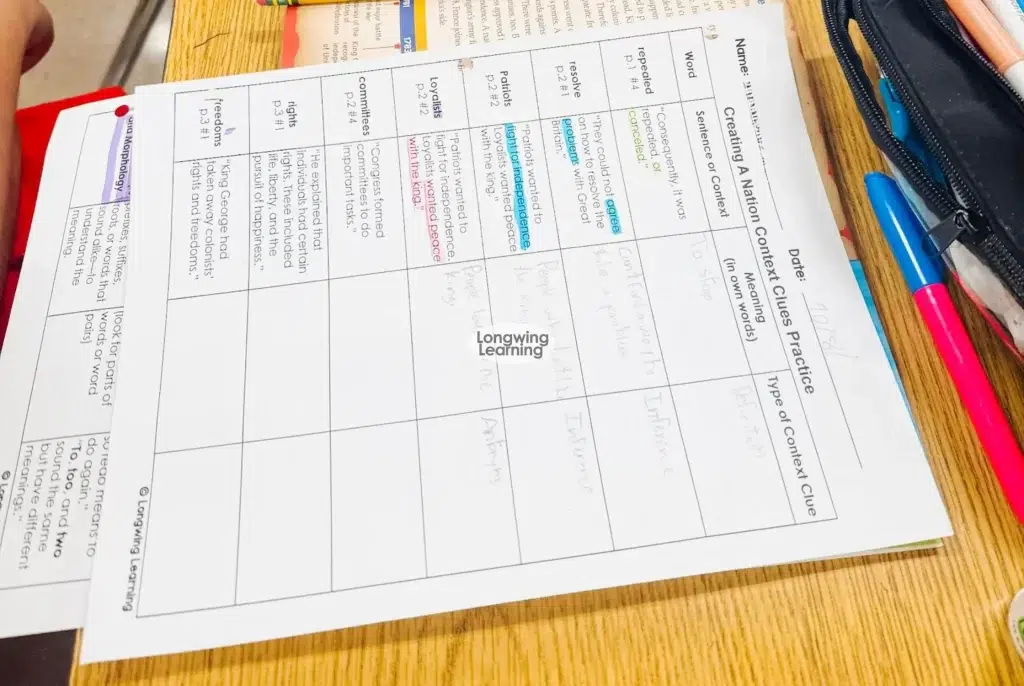
Step 1: Start With Structured Modeling
When I teach a new word or encounter one in our story, I don’t just ask:
“What does this word mean?”
I also ask:
“What type of context clue helped you figure that out?”
“What in the sentence gave you a clue?”
“What effect does this word have on how the sentence feels or what it tells us?”
We practice these questions together, using our color-coded posters and reference sheets. This repetition helps students start internalizing the deeper thinking.
Step 2: Use Sentence Stems That Support Analyzing Context Clues
To support written responses, I provide sentence stems like:
- “The word ___ means ___ because the author included ___.”
- “I know this word means ___ because the clue shows a relationship between ___ and ___.”
- “The author used this word to show ___, and the clue is ___.”
- “The prefix/root/suffix ___ helps me know the word means ___.”
These are simple, scaffolded, and SO helpful during small group and test prep.
Step 3: Connecting Context Clues to Author’s Purpose and Word Choice
I tell students that every word an author chooses has a purpose.
So we practice questions like:
- “Why did the author use this word instead of a simpler one?”
- “Does this word make the story feel more serious, silly, intense?”
- “What mood does it create?”
- “Does it show the character’s feelings or the setting’s tone?”
We connect this back to figurative language and vocabulary all the time.
It’s not just about the word—it’s about why the word is there.
Step 4: Embedding Writing
One of my favorite strategies is flipping the task.
I challenge students to:
- Write a sentence using a word AND a context clue
- Trade with a partner who has to define the word + explain the clue
It’s such a powerful way to reinforce both vocabulary and the author’s craft. And honestly? They love it.
Why It’s Important to Teach Students to Analyze Context Clues
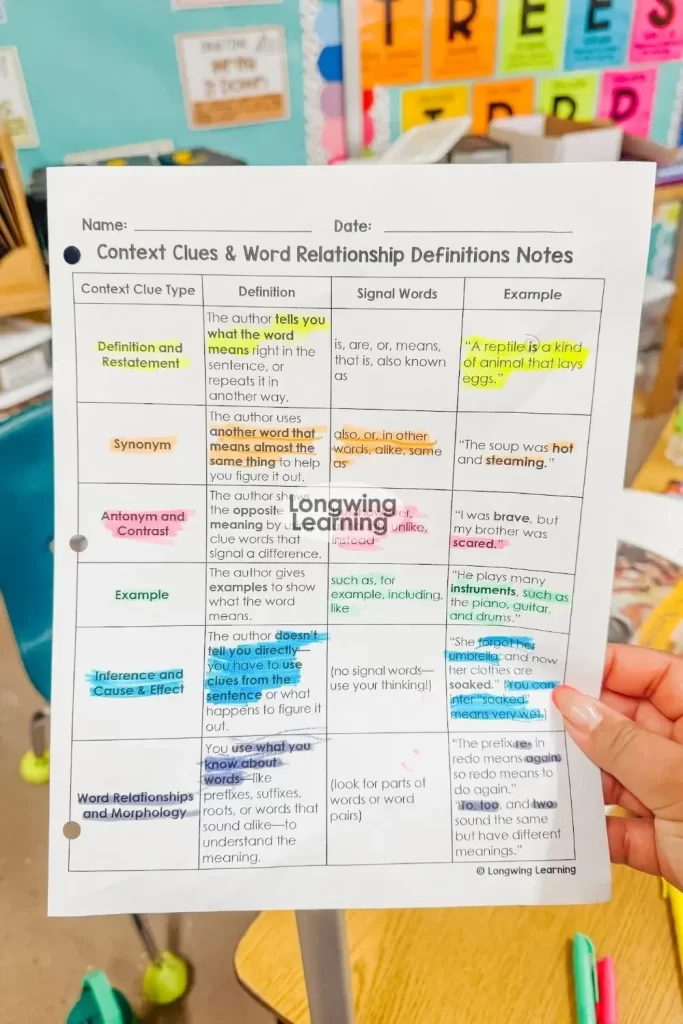
By mid to end of year, most upper elementary students encounter test questions that require them to analyze context clues, not just identify them.
“What does the word ‘inevitable’ mean as used in paragraph 3?”
“Which clue from the sentence best helps you understand the meaning?”
“How does the author’s word choice affect the tone of the passage?”
This is why analysis matters.
The state test isn’t asking for just the definition.
It’s asking for evidence-based thinking.
When students practice analyzing context clues all year, starting with synonyms and examples, then moving toward word relationships and author intent, they’re better prepared for these types of questions.
Building a Complete Vocabulary Routine
This post is the last in my Context Clues Series; check out the rest:
It’s all part of a layered approach to vocabulary that builds real meaning not just short-term memory.
Download the Free Reference Sheet for Analyzing Context Clues
Want to help your students move from ID to analysis?
Download my Context Clue Reference Page.
Use it during:
- Small group reading
- Reading responses
- Vocabulary warm-ups
Connect It With Classroom Tools
Want Ready-to-Go Resources?
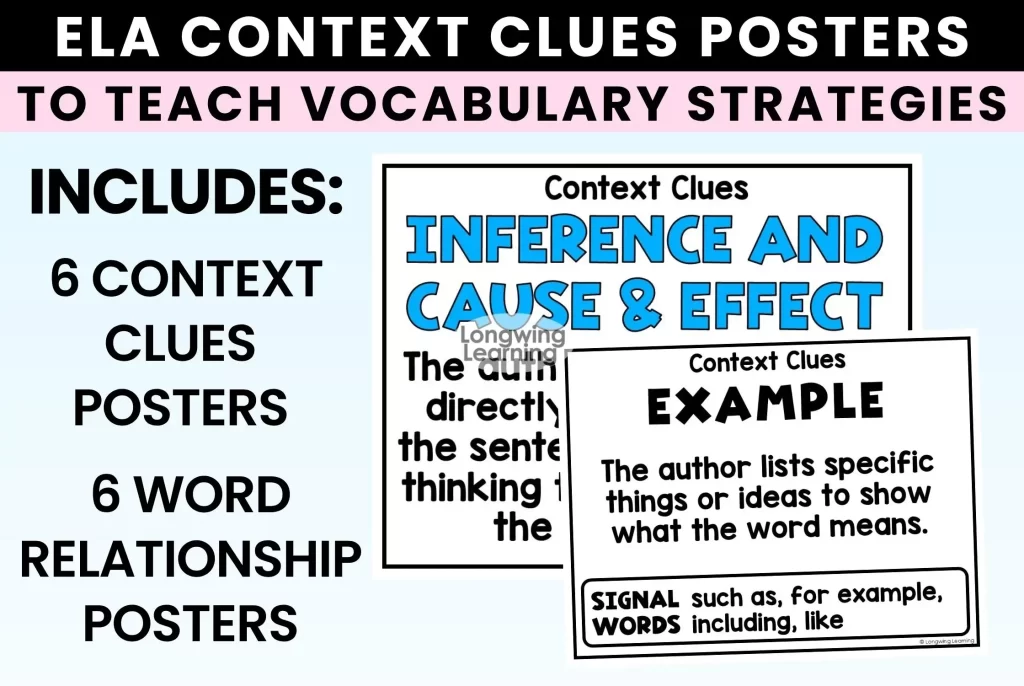
The Context Clues Poster Pack includes visuals for all six clue types, including word relationship.
You’ll also find:
These tools all work together to deepen vocabulary.
Teaching Analyzing Context Clues in Upper Elementary
Vocabulary matters. Teaching students to analyze context clues empowers them to read with intention and independence.
But the ability to analyze how a word works in context? That’s what moves students from basic readers to critical thinkers.
Don’t stop at circling the clue. Show students how to connect it, explain it, and apply it. You’ve got the tools. You’ve got the strategy.
